Introduction: Understanding the Sanding and Refinishing Process
Sanding and refinishing a wooden floor is an important process for preserving its beauty and ensuring its longevity. The process involves sanding down the existing finish to remove any imperfections, and then applying a new finish to protect the floor. This process can help to restore the original beauty of the floor, as well as protect it from wear and tear.
Sanding and refinishing a wooden floor is a multi-step process that requires the right tools and techniques. It begins with sanding the floor to remove any existing finish and level the surface. This can be done using a drum sander and edger sander. The floor should then be cleaned to remove any dust and debris before applying the finish.
The finish can be applied using a brush, roller, or sprayer, depending on the type of finish being used. It is important to apply the finish in thin, even coats and in the direction of the grain. Depending on the type of finish, multiple coats may be required, with drying times between coats. It is also important to avoid applying the finish over electrical cables, recessed lighting, existing vents or ventilation gaps, and junctions with external walls to ensure a smooth and even finish.
By following these steps and using the right tools and techniques, home owners and business owners can achieve a successful and high-quality finish for their wood floors, preserving their beauty and ensuring their longevity.
Factors Influencing the Duration of the Sanding and Refinishing Process
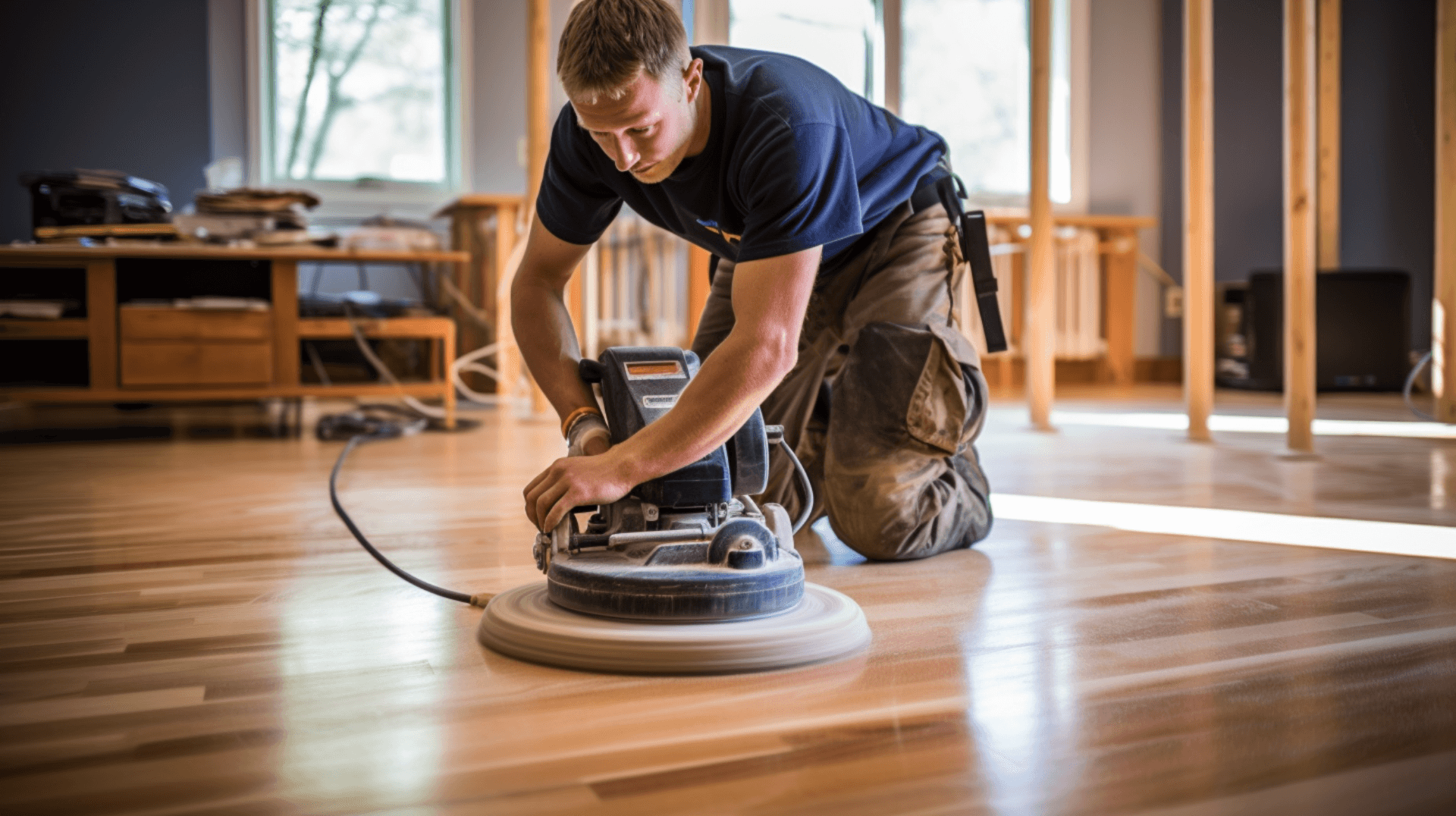
Factors Influencing the Duration of the Sanding and Refinishing Process:
The duration of the sanding and refinishing process can vary depending on several factors, including the size and condition of the floor, the type of wood, and the type of finish.
The size of the floor is a significant factor that can impact the duration of the process. Larger floors will naturally take longer to sand and refinish than smaller floors, as more time is needed to cover the entire surface area. Additionally, the condition of the floor can also affect the duration. Floors in poor condition may require additional sanding and refinishing to restore them to their original beauty, which can add to the overall time needed.
The type of wood being refinished also plays a role in determining the length of the process. Harder woods, such as oak and maple, generally require more sanding time than softer woods like pine and cedar. The density and hardness of the wood can affect how quickly it can be sanded and how many passes are needed to achieve a smooth surface.
The type of finish being applied can also influence the time taken for sanding and refinishing. Different finishes have different curing times, which can impact the overall duration of the process. For example, oil-based polyurethane typically takes longer to cure than water-based polyurethane.
Overall, the size and condition of the floor, the type of wood, and the type of finish are all factors that can influence the duration of the sanding and refinishing process. By considering these factors, home owners and business owners can better estimate the time needed for their specific project.
The StepbyStep Process of Sanding and Refinishing
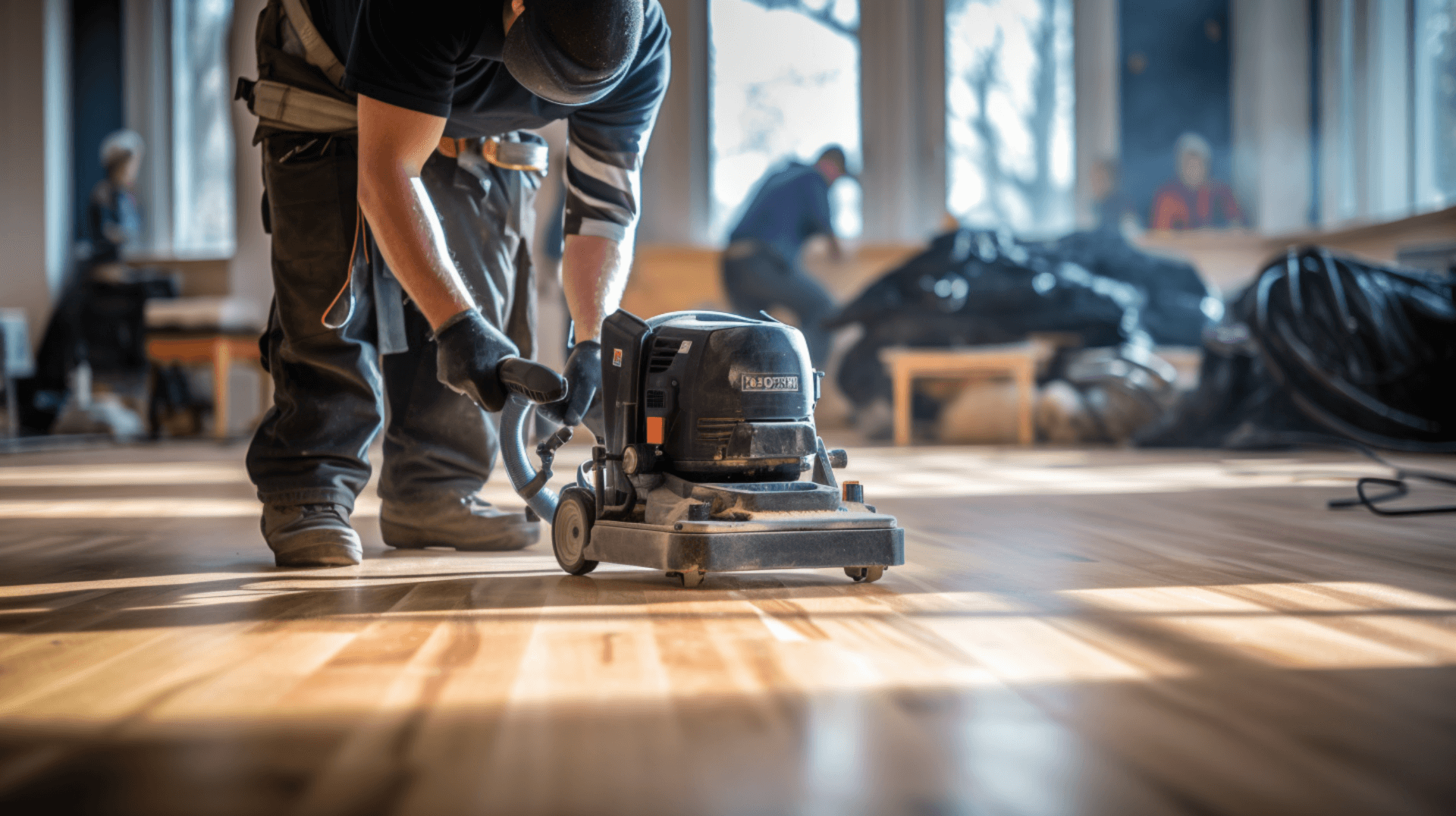
The sanding and refinishing process is a multi-step process that requires the right tools and techniques to achieve a successful and high-quality finish. The steps involved in the process are as follows:
- Sanding: The first step is to sand the floor to remove any existing finish and level the surface. This can be done using a drum sander and edger sander, with progressively finer grits of sandpaper. The sanding process typically takes 1-2 hours for a small room, and up to 8 hours for a large room.
- Cleaning: Once the sanding is complete, the floor should be cleaned to remove any dust and debris before applying the finish. This can be done using a vacuum cleaner or a tack cloth.
- Applying the Finish: The finish can be applied using a brush, roller, or sprayer, depending on the type of finish being used. It is important to apply the finish in thin, even coats and in the direction of the grain. Depending on the type of finish, multiple coats may be required, with drying times between coats. The application of the finish typically takes 1-2 hours for a small room, and up to 8 hours for a large room.
- Curing: Once the finish has been applied, it is important to allow it to cure. This typically takes 24-48 hours, but can vary depending on the type of finish and environmental conditions. During the curing process, it is important to maintain a consistent temperature and humidity level in the room. The ideal temperature is between 60-80F, and the ideal humidity level is between 30-50%. It is also important to avoid exposing the floor to direct sunlight or high levels of foot traffic during the curing process.
Overall, the sanding and refinishing process can take several days to complete, depending on the size of the room and the drying times of the finish. It is important to follow each step carefully and allow sufficient time for the finish to cure in order to achieve a successful and high-quality finish.
Preparing Your Floor for Sanding and Refinishing
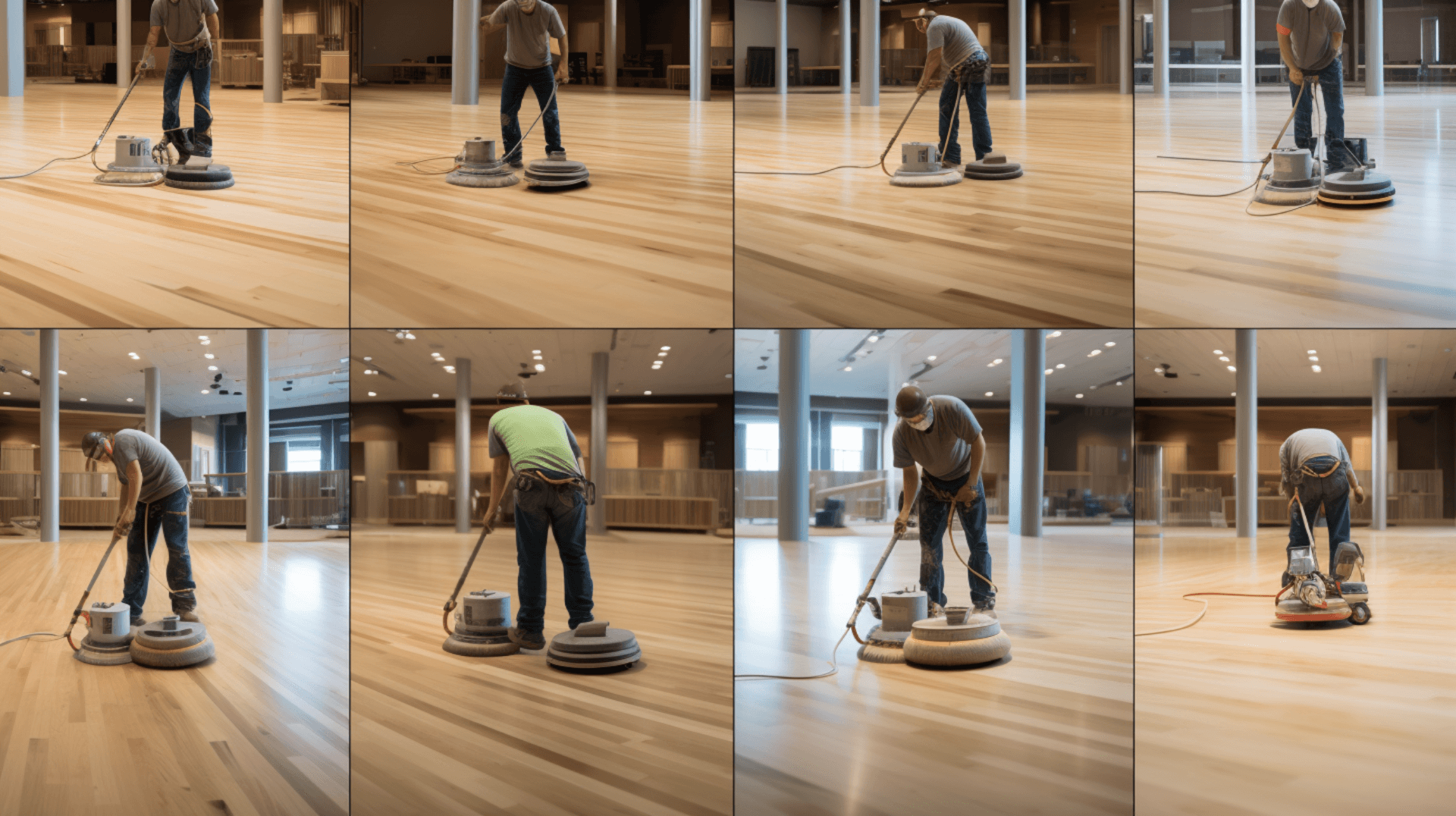
Preparing your floor for sanding and refinishing is an important step in achieving a successful and high-quality finish. Proper preparation can help to reduce the process time and ensure a smooth and efficient process.
Before beginning the sanding and refinishing process, it is important to prepare the floor and the surrounding area. This includes removing any furniture, rugs, and other items from the room, as well as any nails or screws that may be sticking out of the floor. It is also important to check the floor for any loose boards or damaged areas that may need to be repaired before sanding.
To protect your home from dust during the sanding process, it is important to seal off the room with plastic sheeting and tape. This will help to contain the dust and debris and prevent it from spreading to other areas of the home. Additionally, it is important to ensure that the room is well-ventilated to reduce the amount of dust in the air.
By properly preparing the floor and the surrounding area, you can create a clean and accessible surface for sanding and refinishing. This helps to ensure that the sanding process is efficient and effective, and that the finish is applied evenly. It also helps to minimize the spread of dust throughout the home, making the cleanup process easier. By following these steps, home owners and business owners can achieve a successful and high-quality finish for their wood floors.
The Role of Professional Floor Sanding Companies
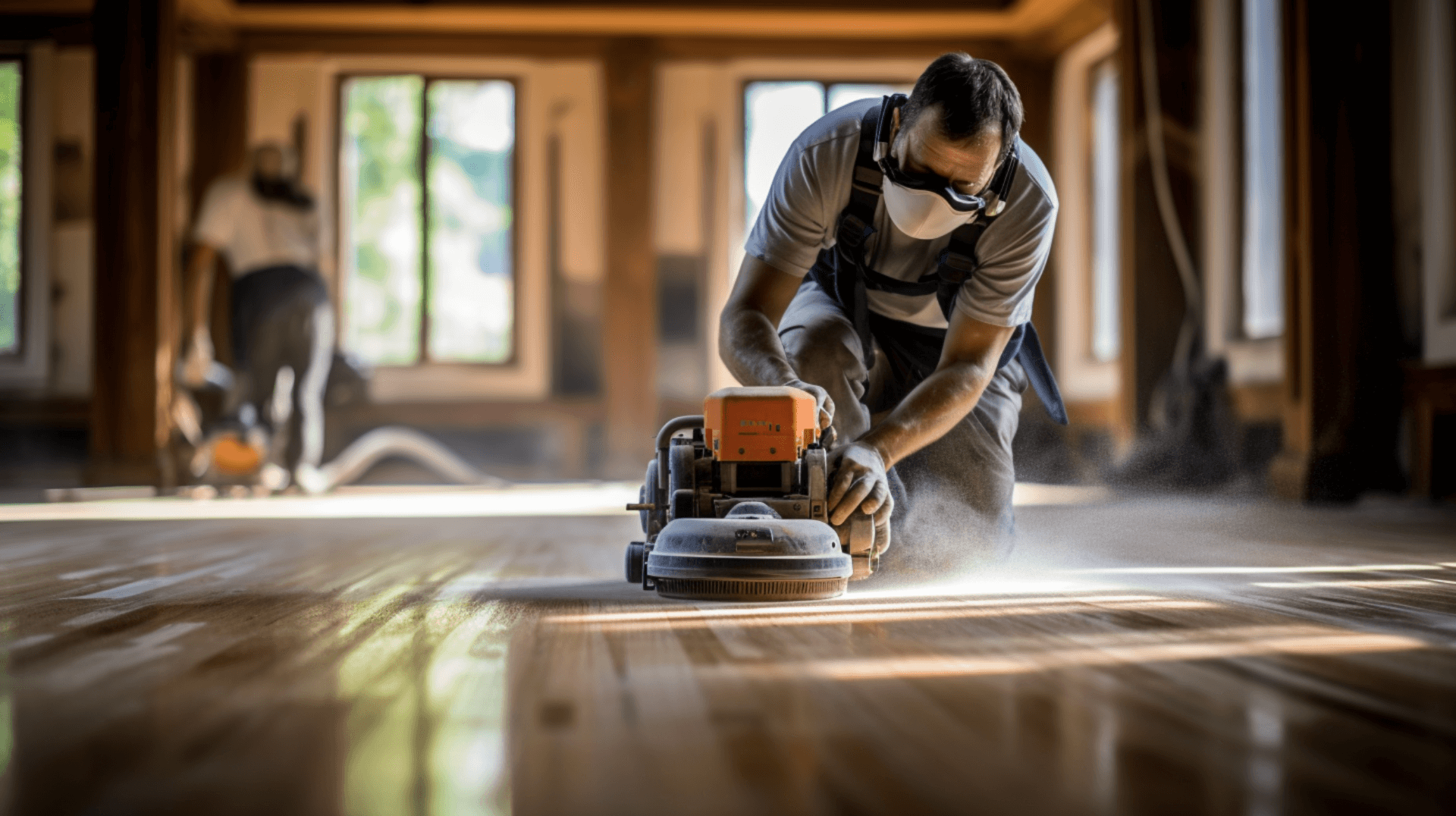
Hiring a professional floor sanding company like GJP Floor Sanding can provide numerous benefits for home owners and business owners looking to achieve a high-quality finish for our wood floors.
Professional companies have the expertise and experience to ensure efficiency and quality in the sanding and refinishing process. they can provide advice on the best tools and materials to use, as well as tips and tricks for achieving a successful and long-lasting finish. they can also help troubleshoot any common issues that may arise during the finishing process. additionally, they can ensure that the floor is properly prepared for sanding and refinishing, including removing furniture and other items from the room.
Furthermore, professional companies can help reduce the duration of the sanding and refinishing process. They are familiar with the different factors that can influence the duration, such as the size and condition of the floor, the type of wood, and the type of finish. They can provide guidance on the most efficient methods for sanding and refinishing a particular floor, as well as the best approach for a specific project. This can help save time and ensure that the job is done efficiently.
Overall, hiring a professional floor sanding company can provide peace of mind and ensure that the sanding and refinishing process is done efficiently and to a high standard. Their expertise and experience can help achieve a successful and high-quality finish for wood floors.
Understanding Different Types of Wood and Their Impact on the Process
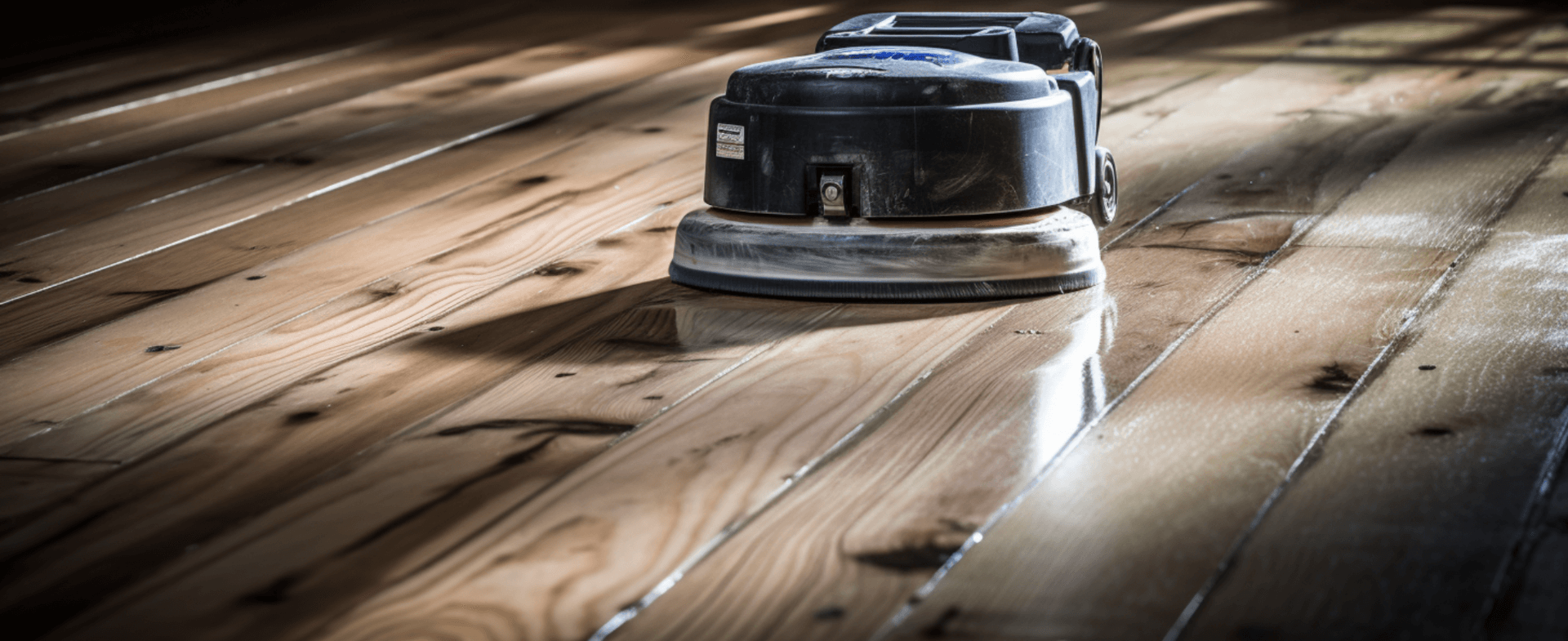
Understanding Different Types of Wood and Their Impact on the Process:
Wood flooring comes in various types, each with its own characteristics and benefits. The three most common types are solid hardwood, engineered hardwood, and laminate.
Solid hardwood is made from a single piece of wood and is known for its durability and longevity. It can be sanded and refinished multiple times, allowing for long-term maintenance and preservation of its beauty. solid hardwood can be more time-consuming to sand due to its density and hardness.
Engineered hardwood is made up of multiple layers of wood that are bonded together. It is more stable than solid hardwood and is less prone to warping or expanding with changes in temperature and humidity. Engineered hardwood can also be sanded and refinished, but it may require less sanding time compared to solid hardwood.
Laminate flooring is made from a composite material and is the most affordable option. While it cannot be sanded or refinished like solid or engineered hardwood, it is relatively easy to install and maintain.
The type of wood flooring chosen can have a significant impact on the sanding and refinishing process. Harder woods, such as oak and maple, generally require more sanding time than softer woods like pine and cedar. The density and hardness of the wood affect how quickly it can be sanded and how many passes are needed to achieve a smooth surface.
Considering the process time and results, the best type of wood flooring for your home depends on your specific needs and preferences. If you prioritize durability and the ability to sand and refinish multiple times, solid hardwood or engineered hardwood would be a good choice. if affordability and ease of installation are more important, laminate flooring may be the better option.
It is recommended to consult with a flooring professional to assess your specific requirements and determine the best type of wood flooring for your home. They can provide expert advice on the process time and results based on the type of wood and your desired outcome.
Safety Considerations During the Sanding and Refinishing Process

During the sanding and refinishing process, it is crucial to prioritize safety to protect yourself, your family, and your employees. Here are some important safety precautions to take:
- Wear appropriate safety gear: Always wear safety glasses, a dust mask, and ear protection to shield yourself from dust and debris generated during the process. This will help prevent respiratory issues and protect your eyes and ears from potential harm.
- Ensure proper ventilation: It is essential to have good ventilation in the room to reduce the amount of dust in the air. Open windows and use fans to improve air circulation. This will help maintain a healthier environment and minimize the risk of respiratory problems.
- Seal off the room: To prevent dust and debris from spreading to other areas of your home or business, properly seal off the room with plastic sheeting and tape. This will contain the dust and make the cleanup process easier.
- Prepare the area: Remove furniture, rugs, and any other items from the room before starting the sanding and refinishing process. Also, check for any nails or screws sticking out of the floor and remove them to avoid accidents.
Safety measures can impact the duration of the process in several ways:
- Proper sealing and ventilation: If the room is not adequately sealed or ventilated, dust and debris can spread, leading to additional cleaning time and potentially affecting the quality of the finish.
- Drying time: If the room is not well-ventilated, the finish may take longer to dry, which can extend the overall process time.
To dispose of sanding dust safely, collect it using a dustpan or vacuum cleaner and place it in a sealed bag or container. This will prevent the dust from spreading and causing respiratory issues. After completing the sanding and refinishing process, thoroughly clean the area to remove any remaining dust and debris.
By following these safety precautions and properly disposing of sanding dust, you can ensure a safe and successful sanding and refinishing process for your wood floors.
The Finishing Process: Types and Time Considerations

When choosing a finish for your wooden floor, there are several types of finishes available, each with its own benefits and drawbacks. The most common types of finishes are oil-based, water-based, and wax-based.
Oil-based finishes are the most durable and long-lasting, and they provide a natural, matte finish. they are more difficult to apply and require more time to dry.
Water-based finishes are the most popular choice for wooden floors, as they are easy to apply and dry quickly. They also provide a glossy finish that is resistant to scratches and scuffs.
Wax-based finishes are the least durable, but they provide a natural, matte finish that is easy to apply and maintain.
The choice of finish can affect the process duration, as some finishes require more time to apply and dry than others. Oil-based finishes typically take the longest to apply and dry, while water-based finishes are the quickest. Wax-based finishes are also relatively quick to apply and dry.
When choosing a finish for your wooden floor, it is important to consider the type of wood, the desired look, and the amount of maintenance required. For example, oil-based finishes are best for high-traffic areas that require maximum durability, while water-based finishes are suitable for areas that need quick drying and a glossy appearance. Wax-based finishes are ideal for low-traffic areas where a natural, matte finish is desired.
By considering these factors, you can choose the right finish for your wooden floor that meets your specific needs and achieves the desired look.
PostProcess Care: Ensuring Longevity of Your Refinished Floor
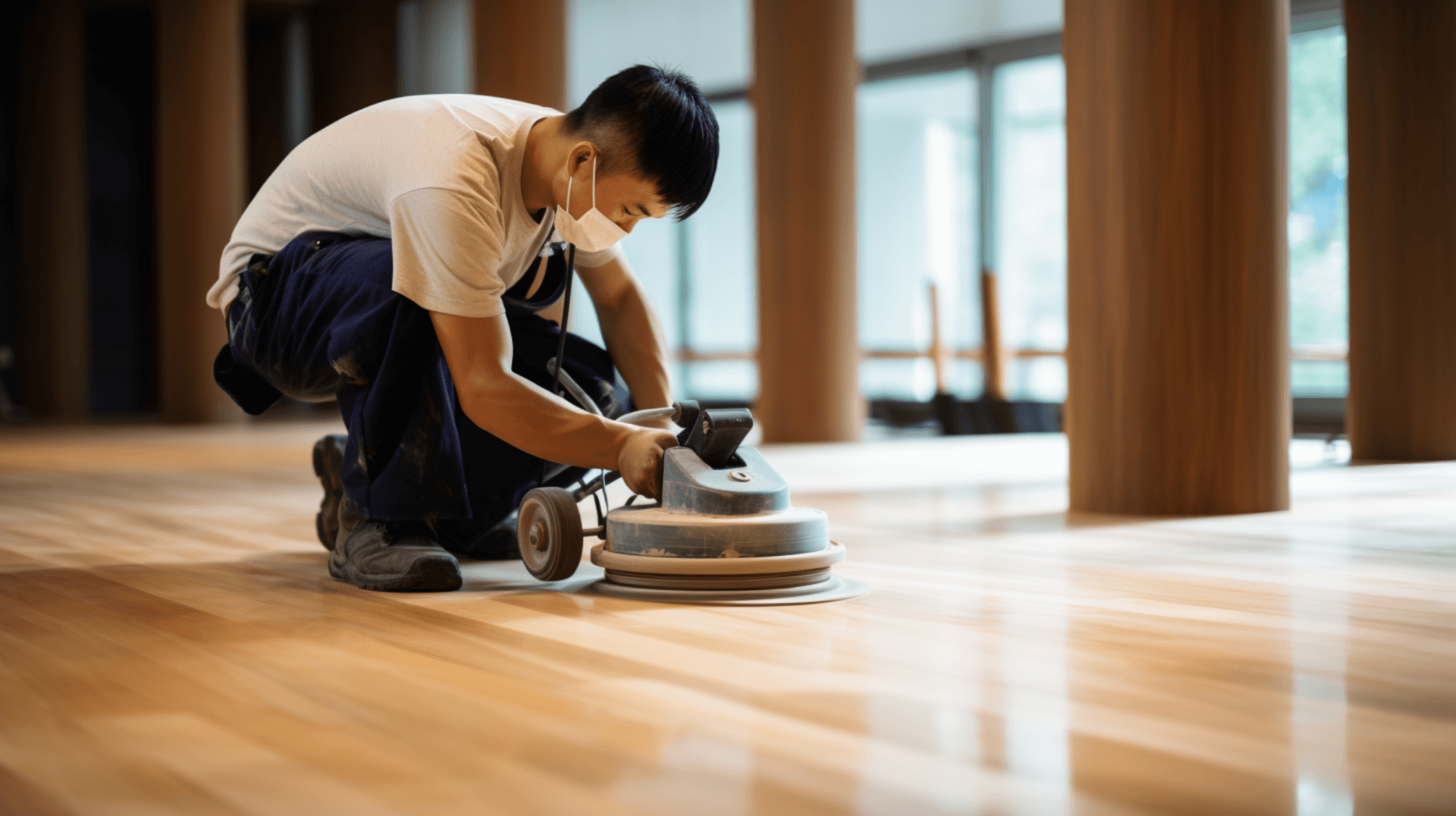
Proper maintenance is essential to ensure the longevity of your refinished wooden floor. Taking the right steps to maintain your floor can help extend the life of the finish and reduce the need for frequent refinishing. Here are some tips for postprocess care:
- Clean regularly: Regularly sweep, vacuum, or mop your floor to remove dirt and debris. This will help prevent scratches and scuffs and keep your floor looking its best.
- Use the right cleaning products: Use cleaning products specifically designed for wooden floors. Avoid using harsh chemicals or abrasive cleaners, as these can damage the finish.
- Protect from furniture: Place felt pads or other protective materials on the legs of furniture to prevent scratches and scuffs. Be aware that area rugs cover the wood floor, as some species are light-sensitive and uncovered areas may change color.
- Avoid water damage: Wipe up spills immediately and avoid using excessive amounts of water when cleaning. Excess water can cause the wood to swell and warp, leading to damage.
- Reapply finish: Reapply a finish every few years to protect the wood and keep it looking its best. This will help maintain the durability and appearance of the floor.
- Monitor humidity levels: Keep an eye on the humidity levels in the room to ensure they remain within the recommended range. This will help prevent the floor from expanding or contracting due to changes in temperature and humidity.
By following these tips, you can ensure the longevity of your refinished wooden floor and keep it looking beautiful for years to come.
Estimating the Time for Your Specific Floor: A Guide
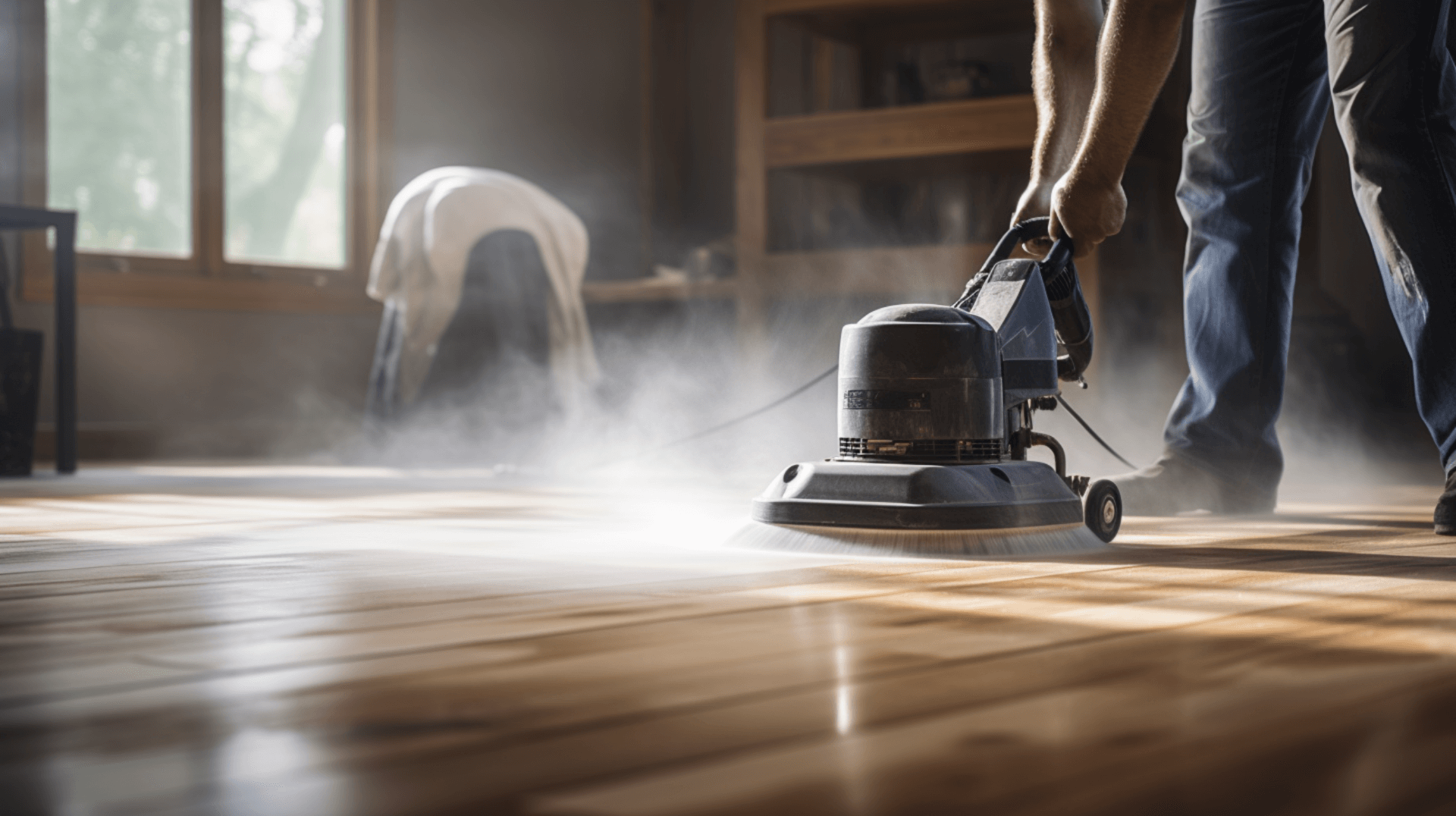
Estimating the Time for Your Specific Floor: A Guide
Accurately estimating the time required for sanding and refinishing a specific floor can be challenging, as there are many factors to consider. The size of the floor, the type of wood, the condition of the floor, and the desired finish are all important factors that can affect the duration of the process. Additionally, the type of floor construction should be taken into account, as suspended timber ground floors require additional steps such as the installation of a damp-proof course and the provision of adequate ventilation.
To estimate the time required for sanding and refinishing your specific floor, it is important to consider the following factors:
- Size of the Floor: The size of the floor is an important factor to consider when estimating the time required for sanding and refinishing. Larger floors will take longer to sand and refinish than smaller floors.
- Type of Wood: The type of wood can also affect the duration of the process. Harder woods, such as oak and maple, generally require more sanding time than softer woods like pine and cedar.
- Condition of the Floor: The condition of the floor can also influence the duration of the process. Floors that are in good condition may require less sanding and refinishing time compared to floors that have deep scratches or stains.
- Desired Finish: The type of finish you choose can impact the duration of the process. Oil-based finishes typically take longer to apply and dry compared to water-based finishes.
GJP Floor Sanding can help provide an accurate time estimate for your specific floor. Our experienced team of professionals can assess the size and condition of your floor, the type of wood, the desired finish, and any additional factors specific to your floor construction. Based on these factors, we can provide an estimate of the time required for the sanding and refinishing process.
By considering these factors and seeking professional advice, you can estimate the time required for sanding and refinishing your specific floor more accurately. This will help you plan your project effectively and ensure a successful outcome.
Expert Insights: GJP Floor Sanding’s Approach to Efficient Sanding and Refinishing

GJP Floor Sanding is a professional floor sanding and refinishing company that has been providing quality services for over 25 years. Our approach to the sanding and refinishing process is to ensure efficiency and quality in our work. We use the latest equipment and techniques to ensure that the job is done quickly and correctly.
To ensure efficiency and quality, GJP Floor Sanding uses a multi-step process that includes sanding, staining, sealing, and finishing. We use the latest dustless sanding technology to minimize dust and debris, and we use high-quality stains and sealants to ensure a long-lasting finish. We also take the time to properly prepare the area before starting the process, removing furniture, rugs, and any other items from the room.
GJP Floor Sanding’s expert tips for a smooth and timely sanding and refinishing process include:
- Properly prepare the area: Remove furniture, rugs, and any other items from the room before starting the process. This will ensure that the floor is clear and ready for sanding and refinishing.
- Use the right equipment and techniques: GJP Floor Sanding uses the latest dustless sanding technology to minimize dust and debris. We also use high-quality stains and sealants to ensure a long-lasting finish.
- Follow proper maintenance and care: GJP Floor Sanding provides guidance on how to properly maintain and care for the refinished floor. This includes using the right cleaning products, avoiding harsh chemicals, and monitoring humidity levels.
By following these expert tips and relying on the expertise of GJP Floor Sanding, homeowners and business owners can achieve a smooth and timely sanding and refinishing process.
Ready to Start Your Sanding and Refinishing Project? Contact GJP Floor Sanding
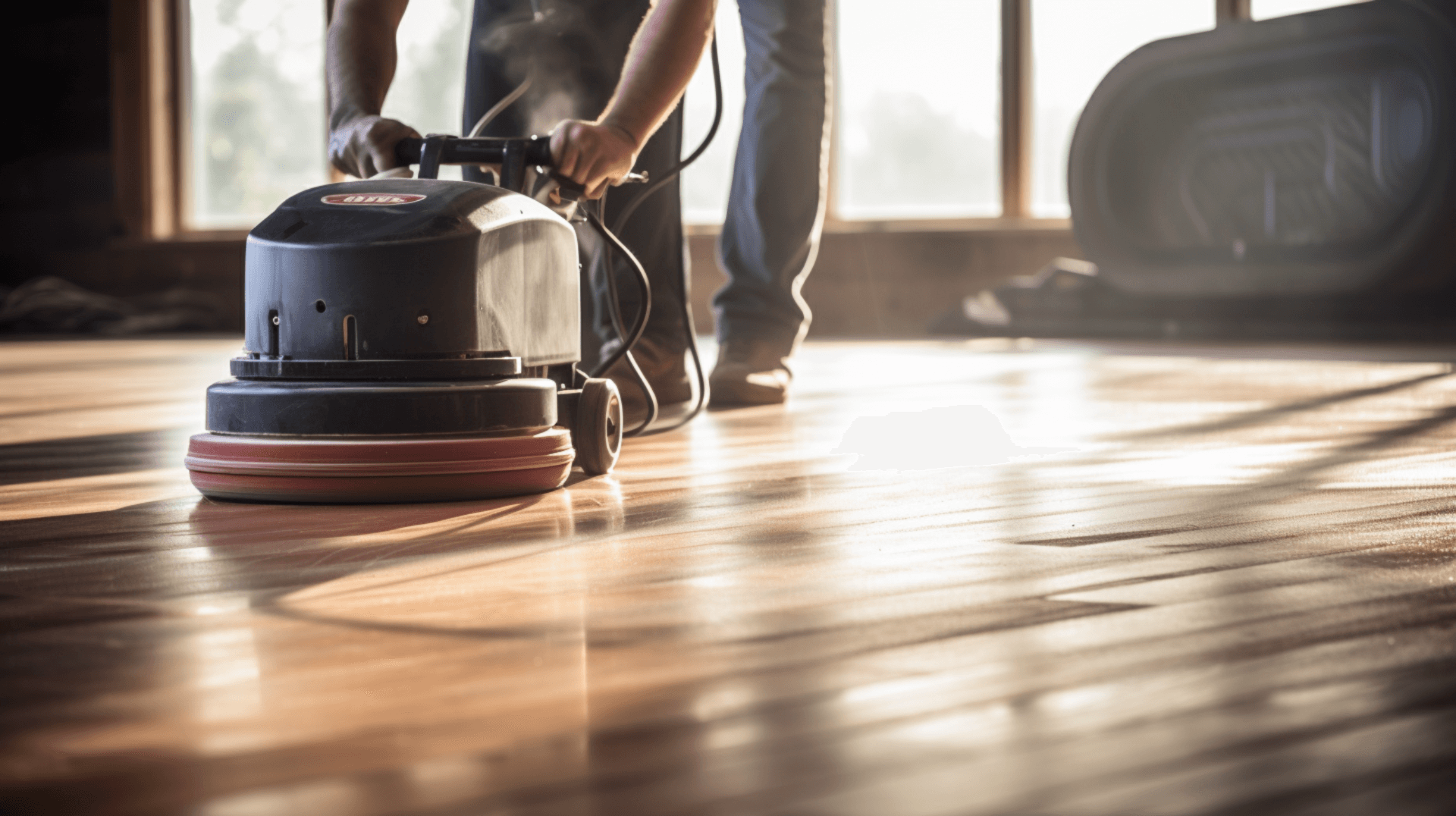
To get in touch with GJP Floor Sanding for your sanding and refinishing needs, you can contact us via our website or call us directly at 02036 978 431 7381 9408. When contacting them, provide information about your floor, such as the size, type of wood, condition, and desired finish. This will help us provide an accurate time and cost estimate for your project.
GJP Floor Sanding is the perfect choice for your sanding and refinishing needs because we have over 25 years of experience and provide quality services. We use the latest equipment and techniques to ensure efficiency and quality in our work. We prioritize safety by wearing appropriate safety gear, ensuring proper ventilation, sealing off the room, and taking other necessary precautions. We use dustless sanding technology to minimize dust and debris, and we use high-quality stains and sealants to ensure a long-lasting finish.
GJP Floor Sanding takes the time to properly prepare the area before starting the process, removing furniture, rugs, and any other items from the room. We also ensure the HVAC system is working properly and inspect the floor for any abnormalities. We provide guidance on how to properly maintain and care for the refinished floor, including using the right cleaning products and monitoring humidity levels.
By choosing GJP Floor Sanding, you can trust that your sanding and refinishing project will be handled with expertise and professionalism. Contact GJP Floor Sanding today to get started on your sanding and refinishing project.
